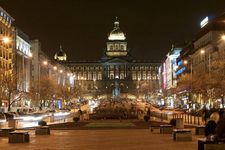See all Attractions in Prague
Wenceslas Square (Václavské náměstí)
Václavské náměstí Praha 1 - Nové Město http://www.praguewelcome.cz/srv/www/en/objects/detail.x?id=45151About
Wenceslas Square | HistoryThe grandly conceived square originated at the New Town establishment by Karel IV in 1348. It is 750 m long and 63 m wide in the upper part and 48 m wide in the bottom part. Within a few years, houses and workshops of craftsmen, malt houses and breweries were built around the assessed area. The square was called the Horse Market, as it was intended for trading hors...more

